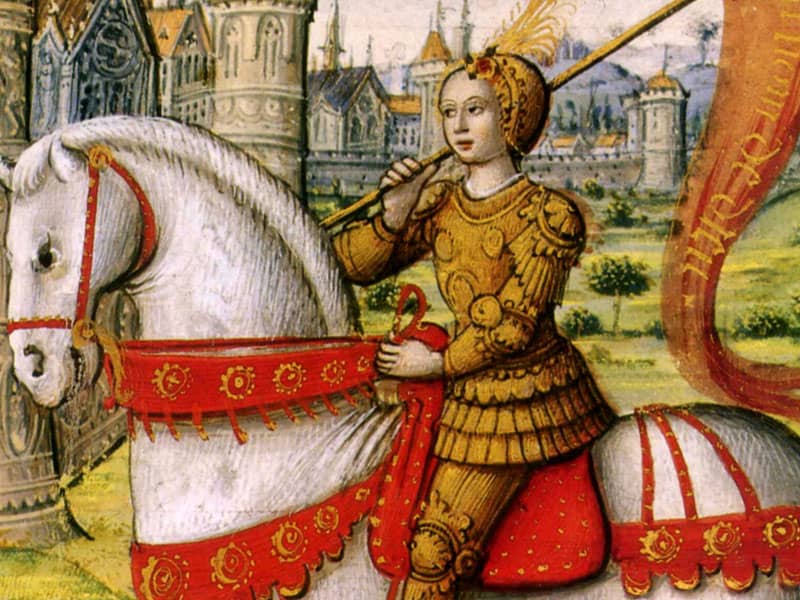I’m sure that it is possible to maintain a radiant sense of religious awe while participating fully in the commercial bacchanal, just as it’s possible to pat one’s head while simultaneously rubbing one’s tummy in a circular pattern, but most people aren’t very good at it.
The young are especially ill-equipped in this regard. For them, the days before Christmas are a time of agitation and sweet torment--in our house, literally so: These days the morning routine starts before dawn with the sounds of urgent whispering and a sort of stealthy rattling from the little girls’ room. Eventually Phoebe and Violet, ages five and six, emerge smirking.
"I couldn’t get nineteen," Violet finally confessed the other morning, through a mouthful of chocolate. "So I got twenty."
"You’re supposed to open the window on the day," my husband said, laughing. "Not the week before, ninny. That’s why they’re called Advent calendars. You wait, and each day in Advent you get one piece of--"
"Children can’t wait to eat chocolate," Phoebe interrupted, as one pointing out the inevitability of some natural phenomenon, such as the tides.
Children have to wait, though, poor things. From Halloween onwards, they have to wait while all about them brightly-lit shop windows are decked with sparkles and merry bunting and filled with desperately inviting goodies. "When can we go Christmas shopping?" they ask.
"When it’s almost Christmas," says their unsympathetic mother, if she is not already saying, "Christmas isn’t about presents, you know."
Children have to look on while other parents, clearly nicer and more indulgent that their own, festoon other front porches with beautiful icicle lights and plug in huge, jolly, inflatable snowmen to greet other children when they come home from school. “When can we get a huge, jolly, inflatable snowman for our front porch?” children may ask.
And from the day after Thanksgiving onwards, these same poor children must wait in traffic beside cars provokingly carrying fresh-cut Christmas trees on their roof racks. "When can we get a Christmas tree?" comes the plea, day after day. "Not for another three-and-a-half weeks," replies their mother, day after day.
"But you said that three-and-a-half weeks a week ago!"
This is what it’s like around here. Partly due to my husband’s Englishness (which means we put up a tree only just before Christmas), partly due to my fecklessness (meaning a constitutional inability to organize gifts for far-flung relatives until long past the surface mail deadline) and partly out of my stubborn refusal to fall in with retailers’ ever-expanding expectations, our children are made to wait for preliminary Christmas satisfaction until practically everyone else they know has already had a full measure of it. (Hanukkah falling where it does on the calendar this year, on Dec. 16, one daughter has pointed out that even her Jewish friends get to open presents before she and her siblings do.)
Does this injure them? Not a bit, of course. Perhaps the delay even makes their experience of Christmas when it comes that much more intense, though I cannot pretend that is really our intention.
On the evening when we finally did bring in the tree this year, there was the usual mayhem and thrilled opening of boxes, punctuated by loud parental admonitions to "be careful with those glass wreaths!" and "stop wrapping the baby in lights!"
When things settled down, and the tree was mostly bedecked, the children moved off into different areas, each to pursue his or her own little Christmas fantasy. Molly, who’s twelve, lay on the floor beneath the tree, looking up dreamily into the illuminated branches. Flora, aged one, toddled around incredulously with a string of tinsel dangling from one hand. Violet danced a private ballet with a nutcracker doll. In the room next door, Phoebe could be seen gliding slowly and reverently. She was holding an ornamental golden pear before her, upside down, and on her head she carefully balanced a pair of Dixie-cup bells connected by pipe cleaner that she made last year in pre-K. Then Paris, who is ten, rushed up with yet another toy nutcracker.
"Where does the Nutcracker story take place? In what country?"
"Russia, usually, though in some productions—"
Paris raised his nutcracker up high, like a trophy. "Russian Ace Nut Cracker Flies with Rocket Power," he announced loudly. "Ggggrrrroughhh!" And as the nutcracker roared off, with boy-fueled rocket power, Paris could be heard narrating, "He bites through the wings of his enemies!"
The first agony of waiting is over. Now the children wait again, for Christmas Eve and the glories of the morning that follows. The thrill and excitement of this holiday (for which they have to wait all year) is obviously completely bound up with presents and sugarplums. Ask them what Advent is, or what Christmas means, and depending on their ages they may reply, "What?" or, "Jesus’ birthday party," or "The coming of Christ, the Messiah." But deep in their hearts? It’s about the tinsel.
And that’s just fine.
Children’s understanding of things doesn’t have to be like ours. With maturity, their perceptions will change, and their intense joy at the sight of the winking Christmas lights will (it is to be hoped) turn out to have been the foundation of the quieter, greater wonder at the miracle of Christmas for which we adults strive in our contemplative moments. Children’s wild joy on Christmas morning will give way, as ours did, to a calmer, more sophisticated understanding of what it’s all about. The almost unendurable waiting of Advent will be replaced by the extremes familiar to adulthood: the veering between slavering consumerism, as we cross relatives off our to-buy lists, and a heightened -- and very precious -- gratitude for the Divine.

